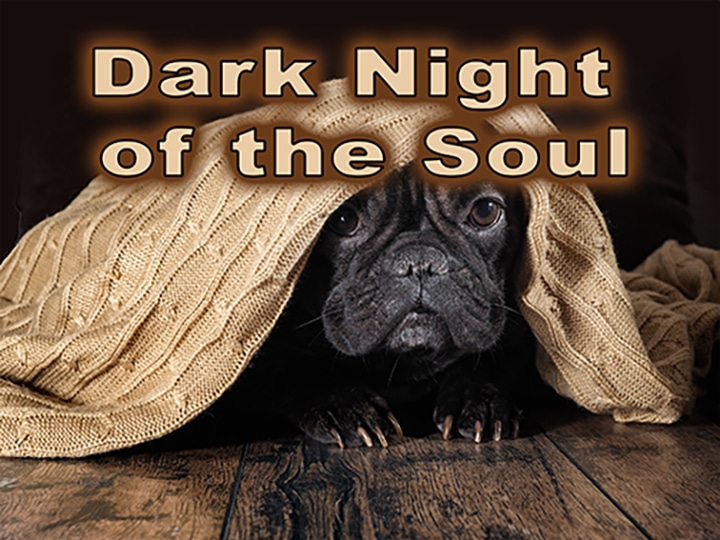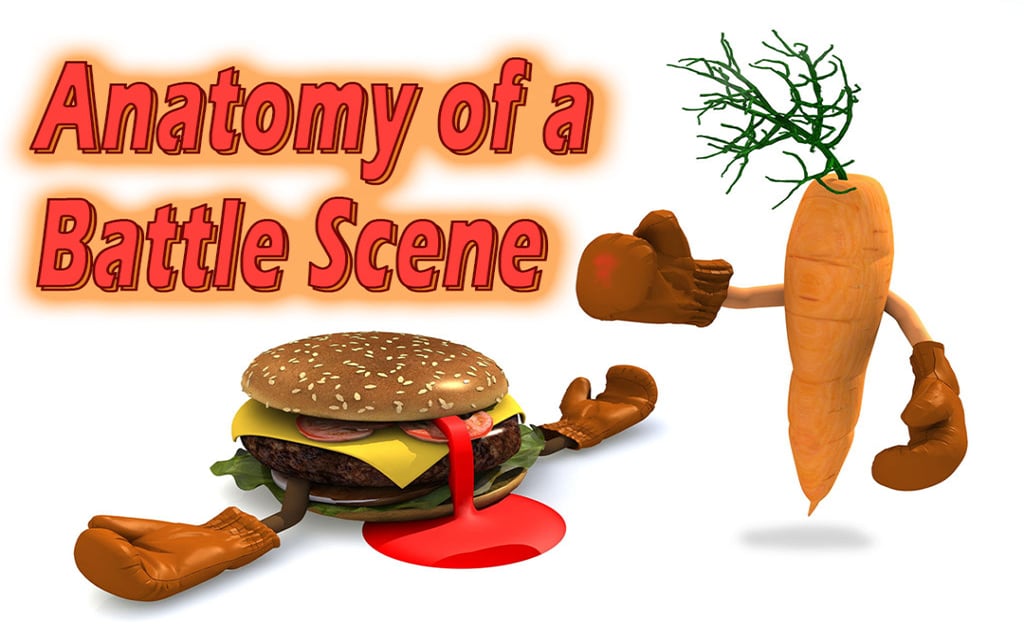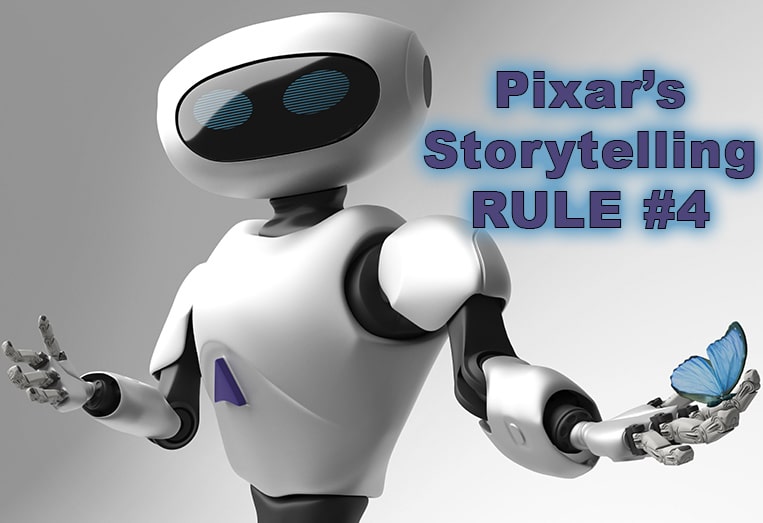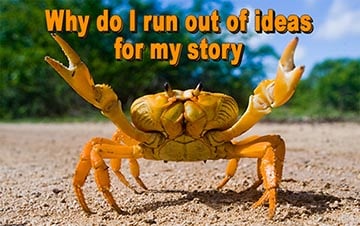How do I make my story longer?
So, there I was, minding my own business and writing my story when, all of a sudden . . . I ran out of ideas? I didn’t know what to do. It wasn’t really writer’s block, it was that I reached the ending before anything really interesting happened. What do I do?
I’ve had this happen lots of times in my own writing and it sucks. No one wants to go back and throw everything they’ve written away and start over, and even if you do start over, you’ll likely end in the same place again.
So what’s the problem? How do I make it so that this won’t happen on my next story?
Do you really want to know? You’re not going to like the answer, but here it is:
OUTLINE!
The reason why your story runs out of gas is because you didn’t plan out the whole story. Now, I know what you’re going to say, “I don’t like outlining.” “I’m a Pantser, not a Plotter.” “Outlining isn’t fun.” Some authors will tell you that writing should be organic, and you should just let your creativity flow instead of restricting it with an outline. If you think that, then keep doing what you’re doing, but since you’re reading this lesson, you’re probably having trouble getting your story to keep going.
If what you’re doing doesn’t work, then try something different!
I understand all of your objections, but if you want your story to keep moving, and present your protagonist with several obstacles for him/her to overcome, then you MUST plan for that. What you’re doing isn’t working, so let’s try something else, and as soon as you start outlining your story and you write something really cool, you’ll be outlining all the time.
OUTLINE PLAN
I’m going to share with you how I outline my plot, but before I do this, I ALWAYS figure out the characters, their flaws, their needs and motivation, and try to come up with their character arcs. We’ll leave that aside for now, but here’s what I do:
STEP 1 – COME UP WITH A BASIC IDEA FOR THE PLOT
We’re just looking for a basic idea for the plot. Usually, when I do this, my basic idea changes as I develop the story . . . that’s good. No reason to stick with an idea when you can come up with a better one. I’m starting a new story about Giants, so I’ll use that as an example. I haven’t given the plot any thought yet, this is just being pulled out of the air, but hopefully, you can see how it will help extend my story, so I have enough pages to develop the character and the conflicts. So here’s my basic idea:
The protagonist, Mikael, (he’s a giant) must go to ArchCity and look for medicine, so he can save his mother from a disease none of the GiantHealers know how to cure. If he fails, she’ll die.
So, I have high stakes (Mom will die) and I have a destination. I always give my character a place to go, so I can throw obstacles in his path along the way, or maybe meet new friends. This is important:
Plot isn’t about what the protagonist does,
It’s about what youdo to the protagonist
You MUST make your protagonist’s life worse and worse through the course of their adventure, so they can grow and become greater, stronger, more courageous . . . than the person who started the adventure. I use destinations to give those opportunities to me as a writer; throw in a couple of monsters, maybe a cliff they must climb, or a ticking bomb they must defuse.
STEP 2 – COME UP WITH THREE SCENES
I first come up with the three most important scenes; the opening, the Dark Night of the Soul (DNofS), and the ending. Let’s see what we can come up with.
Scene 1 – THE HOOK: Mikael (protagonist) is running through the tunnels of his  underground village, called MeraMac. A bunch of bullies are chasing him because they want to take his warhammer from Mikael: a Giant without a warhammer is not a Giant, that’s a saying all Giants know, and the bullies want to take it from the young Giant, just to humiliate him. He’s hiding, then running, then trying to do some tricks to get away, but finally, he’s cornered and the bullies are about to attack. You can see more about writing Hooks here: https://markcheverton.com/writing-an-awesome-hook/.
underground village, called MeraMac. A bunch of bullies are chasing him because they want to take his warhammer from Mikael: a Giant without a warhammer is not a Giant, that’s a saying all Giants know, and the bullies want to take it from the young Giant, just to humiliate him. He’s hiding, then running, then trying to do some tricks to get away, but finally, he’s cornered and the bullies are about to attack. You can see more about writing Hooks here: https://markcheverton.com/writing-an-awesome-hook/.
Scene 4 – THE DARK NIGHT OF THE SOUL: Remember the DNofS?  https://markcheverton.com/dark-night-of-the-soul/Here, you make it seem as if the Protagonist is going to be defeated. In my story, I think Mikael will have found the medicine he needs to save his mother, but the Scavengers take it from him. Now he’s mad and he wants to chase after his enemies to regain the medicine, but he’ll have to ask for help, something he doesn’t do very well.
https://markcheverton.com/dark-night-of-the-soul/Here, you make it seem as if the Protagonist is going to be defeated. In my story, I think Mikael will have found the medicine he needs to save his mother, but the Scavengers take it from him. Now he’s mad and he wants to chase after his enemies to regain the medicine, but he’ll have to ask for help, something he doesn’t do very well.
Scene 7 – THE FINAL SCENE: This is the highest tension in the story. This is where the  Protagonist must come face-to-face with not only the Antagonist, but also with their internal struggle. In this scene, whatever the hero was struggling to learn, then finally understand, and that knowledge helps them defeat the villain. If it is a battle scene, like all of my final scenes are, then I stick with the Anatomy of a Battle Scene pattern, you can see that pattern here: https://markcheverton.com/anatomy-of-a-battle-scene/
Protagonist must come face-to-face with not only the Antagonist, but also with their internal struggle. In this scene, whatever the hero was struggling to learn, then finally understand, and that knowledge helps them defeat the villain. If it is a battle scene, like all of my final scenes are, then I stick with the Anatomy of a Battle Scene pattern, you can see that pattern here: https://markcheverton.com/anatomy-of-a-battle-scene/
STEP 3 – PLOT POINTS
Now that we have the three scenes, let’s add two more; the First Plot Point and the Second Plot Point.
The First Plot Point is where the hero is forced to go on an adventure, and their life is forever changed. In my story, that will be where Mikael will realize he must go find this rare medicine, Peniciln, and to get it, he must go to ArchCity.
The Second Plot Point is where the hero learns the villain’s complete plan, and by hearing it, the hero will realize that he must be successful, or the stakes will be much worse. I think for my story, the Second Plot Point would be when Mikael realizes that the Scavengers want to use the Peniciln to heal their bodies, so they can escape the WasteLands and attack Mikael’s city. For some reason, the Scavengers cannot go far from ArchCity; maybe they need to recharge their tech to stay alive. But with this new medicine, they’d be healed and wouldn’t need their tech any more, and they can invade the neighboring Giant and Dryad villages. Now, Mikael must recover the Peniciln and keep it out of the Scavengers’ hands. He might even need to destroy it, rather than let the Scavengers have it . . . now there’s an awesome moral dilemma! I love putting characters in those kind of situations.
So, now, our story outline looks like this:
-
Scene 1: The Hook – Mikael is being chased by a bunch of giants
-
Scene 2: First Plot Point – Mikael realizes he must go to ArchCity, to save his mom.
-
Scene 3: First Pinch Point – What’s this???
-
Scene 4: Dark Night of the Soul – The Scavengers get the Peniciln from him and it looks like he’s failed.
-
Scene 5: Second Pinch Point – What’s this???
-
Scene 6: Second Plot Point – Mikael realizes he must get the medicine from the Scavengers, or their whole village could be in danger. (we raised the stakes; tension must always be increasing)
-
Scene 7: The Final Battle – Mikael will battle the Scavengers, he’ll have to ask for help from his friends in order to be successful, or they will fail.
STEP 4 – PINCH POINTS
We’re almost there, now we need to add a couple of Pinch Points. A Pinch Point is like a mini battle; it still follows the pattern laid out in the Anatomy of a Battle Scene lesson, link above. It reveals something about the characters and makes things more difficult for them. The obstacles must always be getting harder and harder throughout the story. So, this is a place to inject some tension and excitement. You’re using short sentences, sensory details, describing very little because descriptions slow things down, and maybe you’re killing off a secondary character. If you’re killing someone off, you need to make sure the reader cares about them, to generate more emotional impact.
So figure out some kind of battle, or chase, or a daring thing for your character to do in the Pinch Point. Now we have our outline. All that’s left is for you to figure out how to get from the Hook to the 1stPlot Point, and then from there to the 1stPinch Point. Add the character and his companions going from place to place to place, and along the way, throw obstacles at them with the obstacles getting harder and harder as they go.
STEP 5 – PIXAR’S RULE #4
The last thing I do with my outline is make sure I can fill out Pixar’s Rule #4 . . . you remember  that.
that.
You can see that lesson here: https://markcheverton.com/pixars-storytelling-rule-4/. Here it is for my story.
Pixar’s Rule #4
Once upon a time there was ___.
Every day, ___.
One day ___.
Because of that, ___.
Because of that, ___.
Until finally ___.
Here’s what I’ve developed so far. Likely it will change when I start writing:
-
Once upon a time there was a giant named Mikael.
-
Every day, he isolated himself from others, afraid to let others in after the death of his father; the possibility of feeling grief and sorrow too great.
-
One day his mother becomes sick and the GiantHealers say there is nothing they can do to help.
-
Because of that, he decides to go into ArchCity to look or medicines some say can be found in the mythical MercyHospitl, though the existence of MercyHospitl is only a legend.
-
Because of that, his neighbor and childhood friend, Dyanna, collects a group of friends to accompany Mikael on the adventure.
-
Until finally they find the medicine, Peniciln and bring it back to their mother, but along the journey, Mikael learns that friendships are worth the risk; a life empty of friends, empty of love, is much worse than grief, for grief ends, but loneliness continues forever when you’ve isolated yourself from everyone around you.
I hope this is helpful, now, start your outline, and start writing!!!!!
Mark

Thank you! this helps a lot. I am a beginning author and currently editing my first novel. this really helped me outline it. As extra, i write the character’s arc: Before the adventure he… ending with: after the adventure he is now…
but i appreciate these tips.
OH MY GOD HOLY SHOOT THIS HELPED SO MUCH!!!! THANK YOU FOR MAKING THIS
Also-
First- Sorry for the second one I’m a grammar nazi
Second- The title is spelled wrong
Third- I’m sorry 😭
Thank you! I’m starting a new story, and this really helped fill in the missing key plot points I had.
I’m only 9, but I’ve always loved making books. when I found the Gamenight books, I was hooked! I saw your websight, and LOVED IT!!!! and this has REALLY helped with EVERYTHING! THANK YOU!!!!!!!!!!!!
This video is very helpful to my 5th-grade students who are writing stories. The examples really help them understand how to build a story and develop the characters. Thank you for providing these amazing writing tips!
Thank you SO MUCH!!!!!! I used this for my story- the cat clan- and this helped me create an AWESOME story-line. THANK YOU!!!!!!